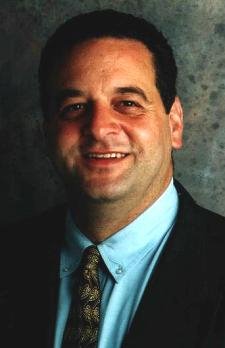Our at-risk Kids Defy Stereotypes - Marin Voice - Marin IJ - Sept 26, 2006
Article Launched: 09/26/2006 12:22:00 AM PDT
Mark Phillips: Our at-risk kids defy stereotypes
Marin Voice
Marin IJ
By Mark Phillips
CONTRARY TO the myths about Marin, not all of our children are privileged. Nor do all of them make it easily through high school with eyes focused squarely on college. For many, just making it through is a challenge. And our academically at-risk kids are not just from Marin City and San Rafael.
The dropout figures across Marin are low, well below the state average, and test scores are high. But the statistics don't tell the whole story. There are many academically "at-risk" students in Marin schools, including a large percentage who will graduate at a minimal competency level and with insufficient personal resources to function effectively either at work or home.
The term "at-risk" commonly has been associated with lower socio-economic adolescents who have highly unstable home environments, have had a brush with the law, and/or have frequently been in trouble in school. The fact is that a significant number of Marin adolescents who haven't had any of these problems are academically "at-risk" today in varied ways as a function of our rapidly changing society, with all its attendant domestic and occupational instability. While 60 percent of the adolescents referred to Phoenix Academy and Marin Community School, the two primary county safety nets for at-risk kids, are from lower socio-economic homes, 30 to 40 percent are from upper-middle-class homes.
Lisa Schwartz, coordinator of alternative education for the county, said the safety net schools "have had an increasing number of referrals from high schools across the county, and over the past few months it's the highest it's been in 15 years. More kids are at risk from behavioral and emotional challenges that underlie academic struggles."
The academic challenge posed by this is recognized by educational leaders.
The Tamalpais High School district looked at ninth-grade data across the district and discovered close to 25 percent of students received D's or F's in core subjects this past year. This led to work at each of the high schools to develop programs that meet the needs of these students better, with monetary support from the school board to help put these programs in place at the beginning of this school year.
The problems identified included skill deficiencies in basic subjects, socio-economic difficulties, and personal-emotional issues. The new programs include smaller classes, more one-on-one tutoring, more one-on-one time between teacher and students both to better discover and address individual student needs and to directly target math and reading skills.
The district also has begun a number of outreach programs designed to target potentially "at-risk" students. Students from Tam High are tutoring middle school kids in Marin City and work is underway to assist the Marin City-Sausalito schools in strengthening curricula so that students can be successful once they enter Tam. Additionally, across the district there is a required "Social Issues" class, frequently taken in the ninth grade, which is specifically designed to help all students address some of the issues impinging on their lives.
Still, as Bob Ferguson, district superintendent, points out, as important as all of these efforts are, "the key success variable is the quality of the teacher." New teachers often are assigned to the students who need the most help while experienced teachers teach higher-achieving students. Increasingly, Tam and other Marin districts are redressing this imbalance. Workshops and resources also are focused on helping teachers develop increased strategies for assisting low-achieving students.
There is a clear recognition that the problems need to be addressed on a social and emotional level, not just academically. County Community School has a full-time mental health professional and two mental health interns.
Each of the district and county programs also recognizes that it is critical to work closely with parents so that the school and home reinforce each other as a partnership. The schools are not trying to be the parent but rather to support the parenting in the home. In some cases, unfortunately, the school and teacher may be the only support a young person has in his or her life.
As more and more of our children are placed at risk by deep-seated social and economic problems within our culture, our schools face an increasing challenge. Marin educational leaders are cognizant of this and are responding to the challenge. But, as the increasing number of referrals of students to county alternative programs indicates, far more work is needed.
The types of programs being instituted in Marin to target these problems need to be strengthened and expanded. This requires more resources and, unfortunately, present state and national educational priorities are more focused on funding for testing than on supporting programs for at-risk students.
Mark Phillips of Woodacre is a professor of secondary education at San Francisco State University.

